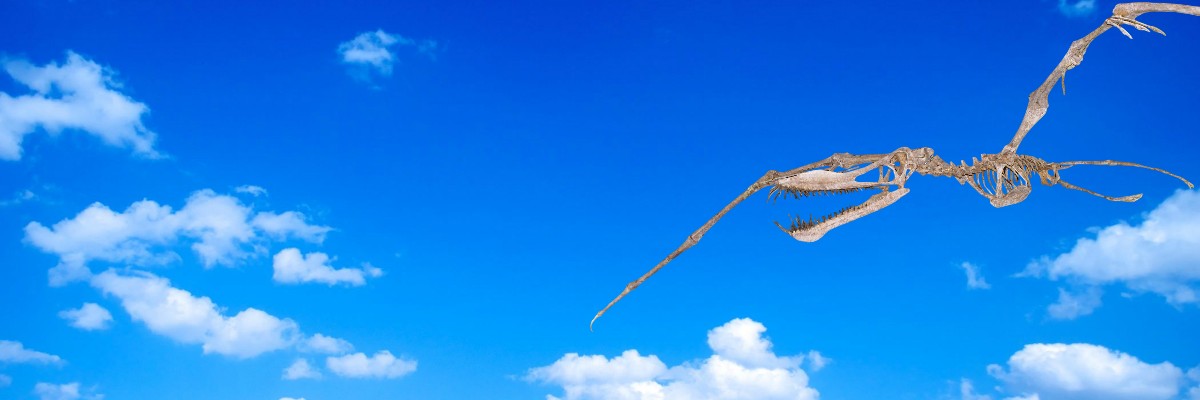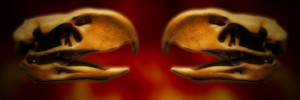Many huge birds lived on Earth. Some were so big that our perception can’t even begin to describe them. Can you imagine a bird with a wingspan as large as a soccer goal?! Yes, it really existed!
Yet such a “feathered airplane” is not the largest flying creature that ever existed. You’re probably asking yourself: If not a bird, then what?! Well, the answer is amazing:
A flying reptile!
Flying reptiles? Are there such things?! Reptiles aren’t just crawlers that everyone is afraid of. Now, I’m not talking about flying iguanas, but more so about pterosaurs. That’s what reptiles that dominated the skies of Triassic were called, that was until the end of Cretaceous. Pterosaurs could be seen above the ground hundreds of millions of years ago. However, they seem to have totally disappeared 66 million years ago.
Isn’t it true that when someone says the word fly, the first thing you think about is birds, then airplanes, but never reptiles? And yet, the first flying vertebrates were not birds, but rather reptiles. Their wings were fibrous membranes with which they could move without touching the ground. But you can make up your own mind about how much they resemble lizards and today’s birds, especially after I introduce you to a few species that might leave you speechless.
On this page:
- 1 Pteranodon longiceps – most famous flying reptile
- 2 Quetzalcoatlus northropi / Hatzegopteryx thambema – the largest flying animal of all time
- 3 Ikrandraco avatar – movie star
- 4 Dimorphodon macronyx – flying bulldog
- 5 Nyctosaurus gracilis – small winged deer
- 6 Jeholopterus ninchengensis – a furry vampire
- 7 Nemicolopterus crypticus – a tiny pterosaur
- 8 But wait! Did all flying reptiles disappear?
Pteranodon longiceps – most famous flying reptile
The world of pterosaurs also has its celebrities. Pteranodon longiceps is among the well-known and most studied flying reptiles. Many researchers offered personal opinions about this creature, which was considered for a long time the largest pterosaur that ever existed. It had a wingspan of up to 6 meters (20 feet).
Despite its impressive dimensions, Pteranodon longiceps was a rather light creature. It had hollow bones, like flying birds today. Most likely, it weighed around ten kilograms. Estimating the weight of this flying being is still a controversial topic among specialists 1)”On the Size and Flight Diversity of Giant Pterosaurs, the Use of Birds as Pterosaur Analogues and Comments on Pterosaur Flightlessness” – study conducted by Mark P. Witton and Michael B. Habib, published in PLoS ONE on November 15, 2010.
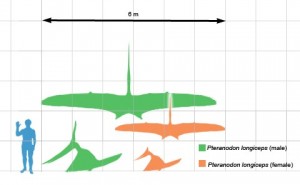
Pteranodon longiceps is among paleontologists favorites, not just because it was big, but also because it had a long narrow crest, pointed back, and aerodynamic shape. It’s not clear what the use of having a crest was – perhaps for stabilizing or steering flight direction. Because the male’s ridge was larger, we can assume it was used in mating rituals. Males needed something to show off with, right?!
Actually, females were much smaller – about half the size of males 2)”Sexual dimorphism of Pteranodon and other pterosaurs, with comments on cranial crests” – study conducted by S. Christopher Bennett, published in Journal of Vertebrate Paleontology no. 4/1992. When the “husband” came to give his wife a hug, the little female reptile probably felt suffocated by his love. No wonder couples like these did not resist time!
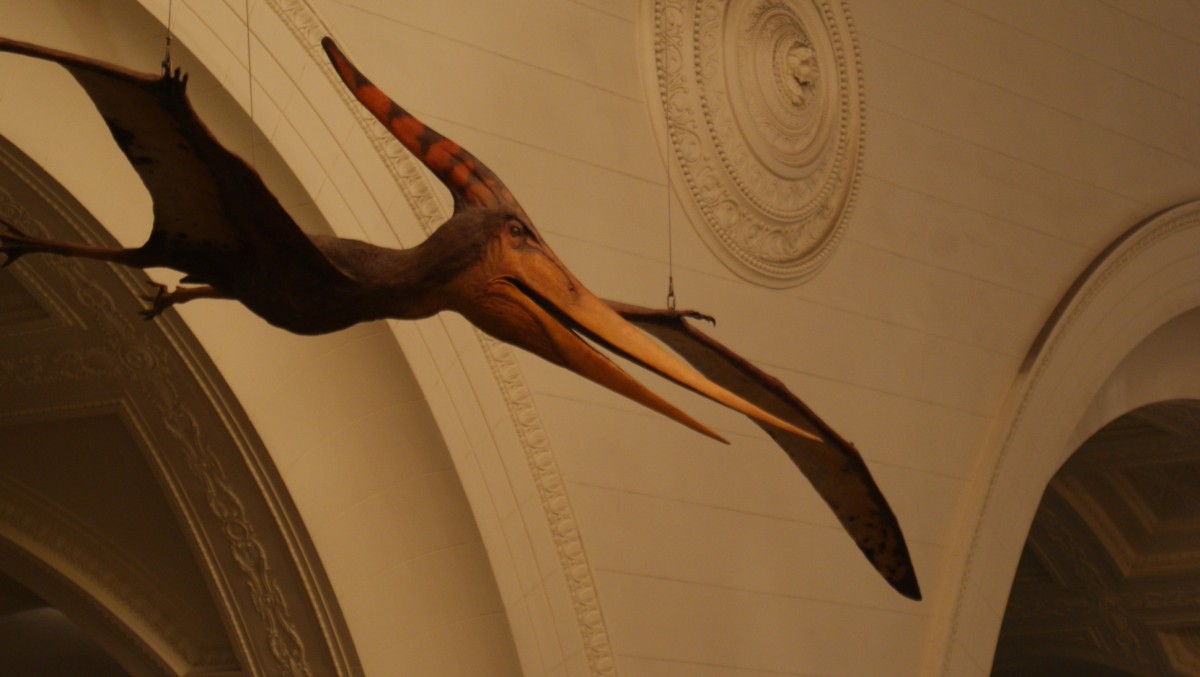
Pteranodon longiceps lived 85 million years ago, in Cretaceous, when the center of North America was covered with water. The fossils were discovered in the United States; more specific, Kansas, Wyoming, South Dakota, Nebraska, and Alabama.
This famous pterosaur’s name was not chosen by chance. “Pteranodon” means “winged and toothless”, and “longiceps” means “long head”. The beak looks more like that of a bird rather than a reptile head because it was part of the evolved pterosaurs category. Food remains from their fossilized stomachs show they fed on fish.
Quetzalcoatlus northropi / Hatzegopteryx thambema – the largest flying animal of all time
- Pelagornis sandersi:
7.3 meters - Argentavis magnificens:
7 meters - Pelagornis chilensis:
5 meters
Tall as a giraffe, Quetzalcoatlus northropi is currently considered the largest flying animal, larger than any existing or extinct bird 3)”Quetzalcoatlus” in Dinopedia. Weight estimates vary widely, but most likely, it had about 200-250 kg (440-550 lb) 4)”On the Size and Flight Diversity of Giant Pterosaurs, the Use of Birds as Pterosaur Analogues and Comments on Pterosaur Flightlessness” – study conducted by Mark P. Witton and Michael B. Habib, published in PLoS ONE in November 15, 2010.
The wingspan of this monster reached… 12 meters (39 feet) 5)”Ecology and Behaviour of Mesozoic Reptiles” by John L. Cloudsley-Thompson, book published by Springer in 2005. And not only was it big, it was also fast! In flight, it could reach up to 100 kilometers per hour.
To give you a glimpse of how large it was, think of an F-16 fighter plane. It has a wingspan of around 10 meters 6)”F-16 Fighting Falcon” – sheet published by U.S. Air Force on October 8, 2007.
It lived in the late Cretaceous period. At that time there were no speed limits, so Quetzalcoatlus northropi were able to glide through the air like quicksilver.
Named after a feathered snake from the Aztec mythology, it had a long neck (told you it looked like a giraffe!) and a short tail. It was part of the flying reptile family, with unusually long and stiff necks 7)”Quetzalcoatlus” in Dinopedia. Fossils have been discovered in the United States; more specifically in Texas.
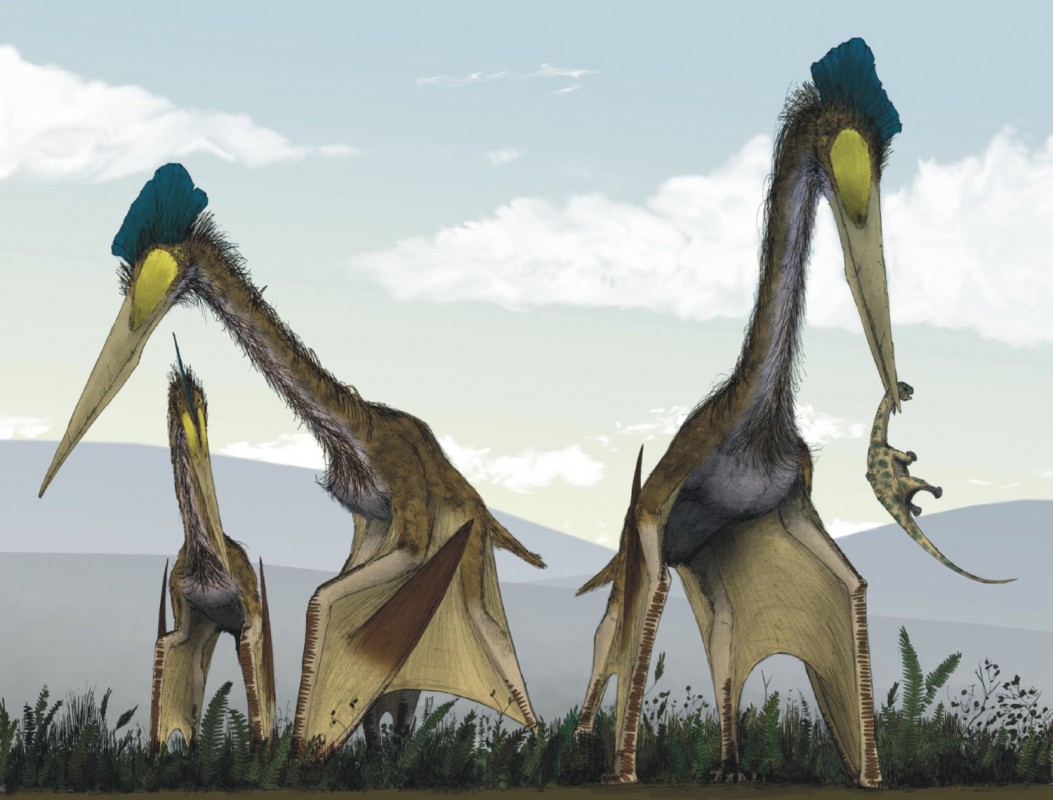
It is a mystery about what they ate. For a while, scientists thought they were fishing in flight or they were eating corpses, but there are some arguments against these theories. Most likely, they caught small animals, 8)”A Reappraisal of Azhdarchid Pterosaur Functional Morphology and Paleoecology” – study conducted by Mark P. Witton and Darren Naish, published in PLoS ONE on May 28, 2008 although it is not clear how they did that. Perhaps the small animals died of fear after seeing them.
Hatzegopteryx thambema was a pterosaur, almost identical to Quetzalcoatlus northropi. Some paleontologists even considered it to be the same creature. Only that the Hatzegopteryx thambema was discovered in Transylvania, Romania. They found several bones belonging to the same creature – and extrapolating them led to many debates: Mirror, mirror on the wall, who’s the biggest and coolest of them all?
Ikrandraco avatar – movie star
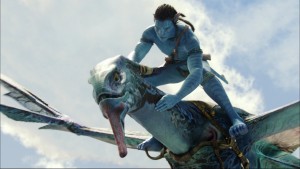
You’d think scientists would be so concerned with their activities that they would not be up-to-date with major commercial successes in the world of contemporary movies. However, that’s not the case with the researchers who, in 2014, in Liaoning Province in northwest China, discovered a pterosaur resembling Ikran, a character from the movie “Avatar” by James Cameron. Ikrandraco avatar really means: Ikran dragon in “Avatar” 9)”Ancient flying reptile named after ‘Avatar’ creature” by Will Dunham, news published by Reuters on September 14, 2014.
Where exactly is the similarity? Ikrandraco avatar has a ridge on the mandible, like Ikran from the movie. Many flying reptiles had head crests, but crests on the lower arch were rarely seen. Ikrandraco was the proud possessor of such a prominence that could have transformed him into a movie star, if he had lived in different times.
But its mind wasn’t set on such self-importance. It spent a lot of time catching fish from freshwater lakes, which it then stuffed them into a “bag” in its throat, kind of like pelicans do.
Ikrandraco lived at the beginning of Cretaceous, 120 million years ago. It had 40 small teeth that helped it catch its prey and a wingspread of 2.5 meters (8 feet) 10)”Ancient flying reptile named after ‘Avatar’ creature” by Will Dunham, news published by Reuters on September 14, 2014.
Dimorphodon macronyx – flying bulldog
Not all pterosaurs had long, graceful necks. Dimorphodon macronyx had a short, stocky neck and a small jaw that made it, in a way, resemble a bulldog. Its head was quite large for its body. With a wingspread of 1.4 meters, it wasn’t exactly huge.
It lived in Jurassic, 176 million years ago. Like other flying reptiles from the same period, it had a long tail; probably for helping it keep its stability while flying.
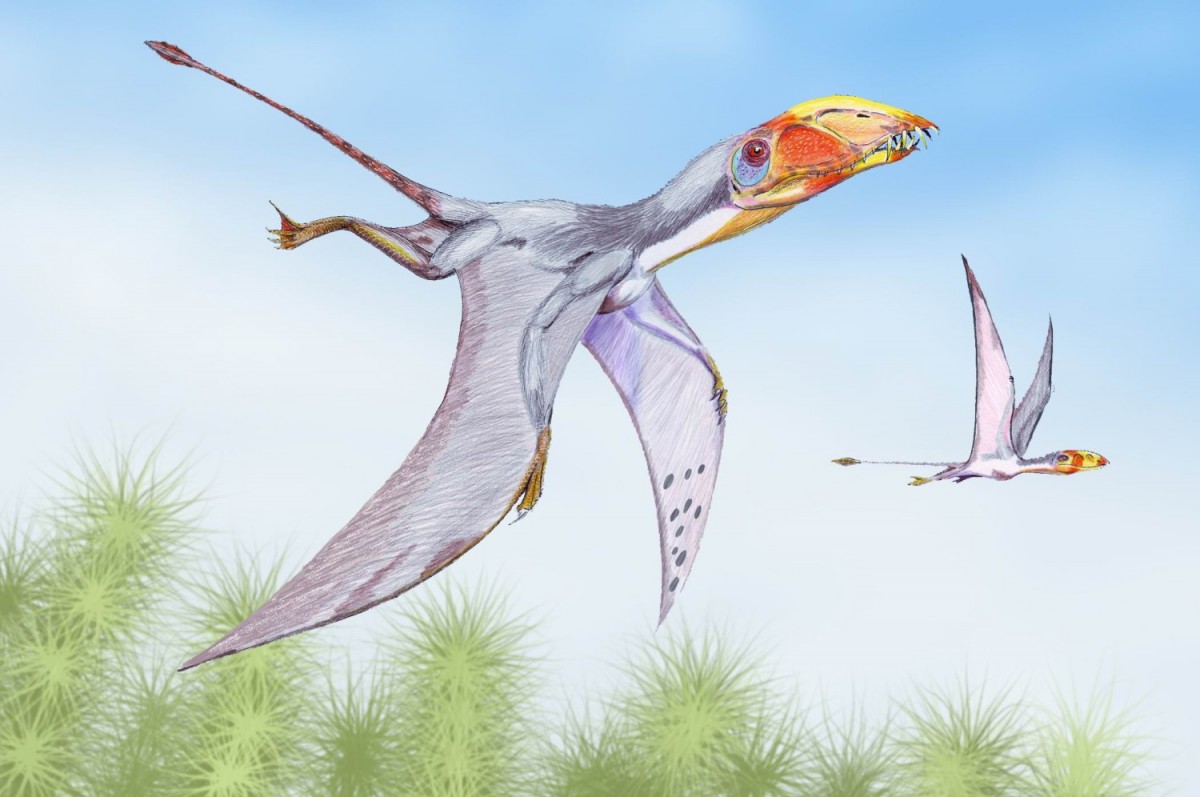
Its name means “two kinds of teeth”. It had two big teeth on the lower jaw, then another 30 smaller and sharper teeth. It seemed like a bulky being, but it was pretty light. Its head had a few large openings, particularly the nostril area. Its limbs were well developed, so moving on the ground was probably easy too.
Dimorphodon macronyx was discovered in 1828 by Mary Anning, a woman who had more than a passion for fossils (literally). It was the first pterosaur found in the UK, making the Brits proud. In fact, Mary discovered, since she was 12, many fossils for the first time, not only at the national level, but also at the world level 11)”Jurassic Mary: Mary Anning and the Primeval Monsters” by Patricia Pierce, book published by The History Press in 2015.
Nyctosaurus gracilis – small winged deer
Many flying reptiles had ridges, but only some could boast with one as big as Nyctosaurus gracilis. If Frankenstein would have thought to create a new creature that was a flying reptile, Nyctosaurus gracilis would have been the result of this terrible experiment (although, it resembled a deer more than a monster).
Now, do not think that this pterosaur was even the biggest freak of its time, more precisely towards the end of Cretaceous. It had an average size, with a wingspread of 2 to 3 meters (6.9 feet). So it wasn’t even scary. Its crest was admirable. Did it come with free radio transmission?
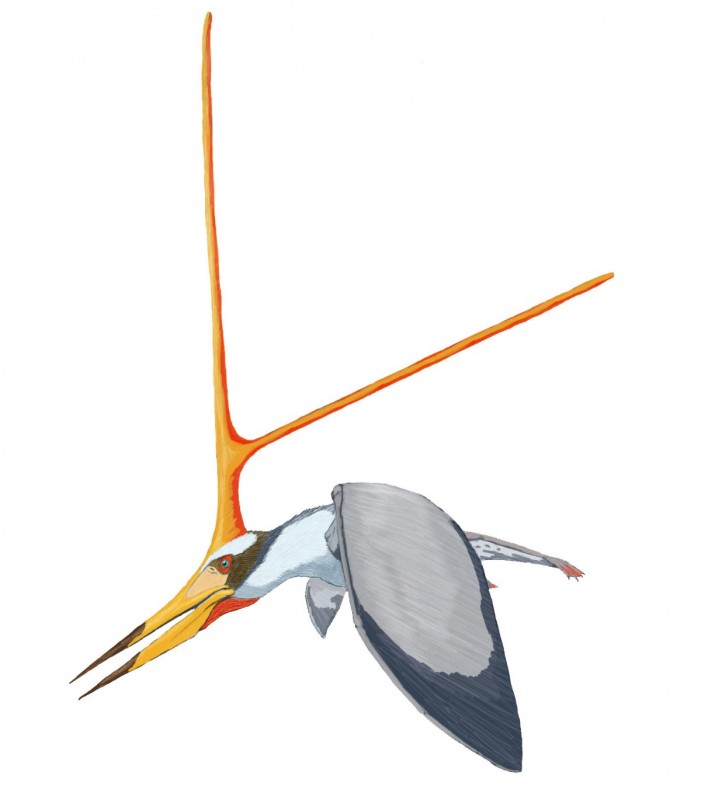
But still, it had something special. From what is known so far, this pterosaur was the only being which had lost its claw fingers. Probably because it flew all the time and had no need to cling onto anything.
Jeholopterus ninchengensis – a furry vampire
Jeholopterus ninchengensis wasn’t that big either. This small flying reptile had a wingspan of one meter (3 feet). It lived from the middle to the end of Jurassic 12)”Jeholopterus ninchengensis by David Peters, article published in Reptile Evolution.
Well preserved fossils discovered in China left paleontologists astonished. Jeholopterus ninchengensis looked like a hairy bat. But the hair on its body did not look like that of mammal hair or bird feathers from today’s era. They were fibers that protected it from insects 13)”Jeholopterus ninchengensis by David Peters, article published in Reptile Evolution – similar to the way we put on different sprays to keep mosquitoes away. This “hairiness” was found on all flying reptiles, but in different proportions. Jeholopterus ninchengensis had it in abundance.
Its limbs were strong and claws were covered by a protective membrane. Therefore, it is thought that it spent a large amount of its time in trees.
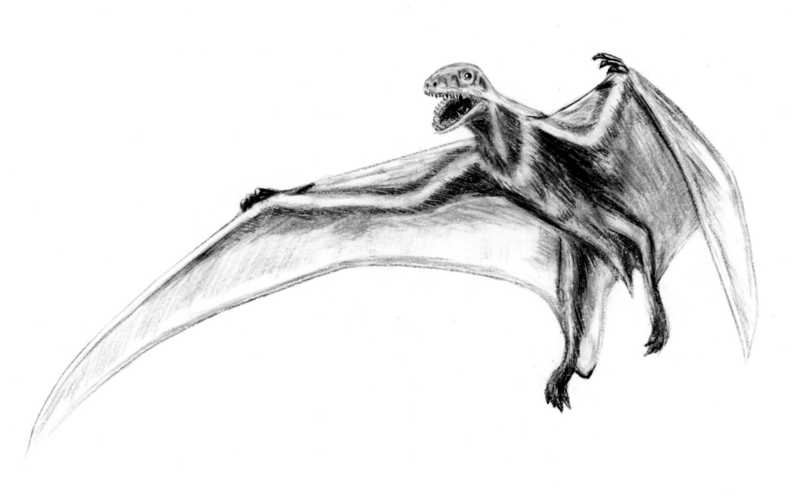
The pterosaurs from the Anurognathidae family were insectivores, but occasionally had their fill of dinosaur blood. Jeholopterus Ninchengensis also belong to the Anurognathidae family, but they were a bit “mobster”.
It may have liked insects, but it wasn’t completely satisfied with them. In order to have fun or to quench its craving for something delicious, it sank its teeth into dinosaurs that came in its path and squeezed their blood out of them with its pincer like jaws. Dinosaurs couldn’t escape these pesky mobsters easily, because they clung onto the dinosaurs with their huge claws until they were satisfied 14)”Jeholopterus ninchengensis by David Peters, article published in Reptile Evolution.
Nemicolopterus crypticus – a tiny pterosaur
Not all pterosaurs were big. Some were very small. Nemicolopterus crypticus, whose wingspan wasn’t bigger than 25 centimeters (10 inches), was two times larger than a hummingbird today. As small as a sparrow, if you prefer this comparison. It’s the smallest pterosaur discovered so far 15)”New Mini-Pterodactyl Among Smallest Known” by Kevin Holden Platt, article published in National Geographic on February 11, 2008.
It lived more than 120 million years ago, at the beginning of Cretaceous, across China today. It was feeding on insects and lived in trees, clinging onto branches with its curved paws. It had a small beak and no teeth at all.
Its discovery tells us something interesting about the flying reptiles. The huge reptiles at the end of the Cretaceous evolved from small creatures that lived in trees 16)”New Mini-Pterodactyl Among Smallest Known” by Kevin Holden Platt, article published in National Geographic on February 11, 2008.
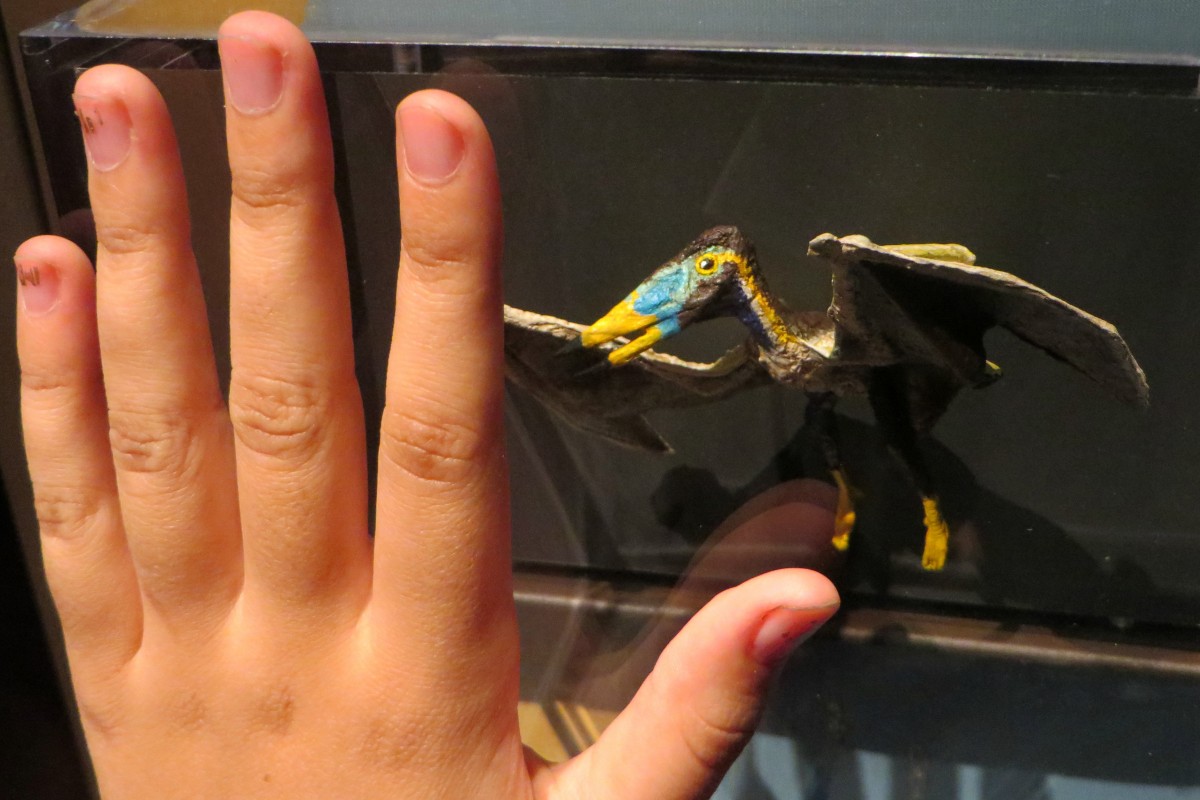
But wait! Did all flying reptiles disappear?
I said earlier that flying reptiles disappeared 66 million years ago. I was talking about pterosaurs, they no longer exist. But nowadays, other reptiles fly – or at least glide. The point is, these reptiles are moving through the air. And no, they don’t have feathers!
Several lizard species of the gecko family (like Ptychozoon, Lupersaurus, Cosymbotus, and Thecadactylus) have extended patches of skin on their limbs, trunk, and tail areas, allowing them to float quite gracefully through the air. They sure don’t have fluttering wings!
Draco volans, the reptile traditionally called flying dragon, is a Southeast Asia lizard that has the capacity to fly due to its rib extensions. With the “wings” formed like that, it can fly from tree to tree over small distances.
The snake is, by definition, a crawling animal. But there is a snake… that flies! Chrysopelea is its name and it lives in Southeast Asia, India, and Melanesia. It looks like an ordinary snake, but it can stretch its body laterally and open its ribs so it can be as flat as a ribbon. It can float in the air, up to 100 meters – and when it wants to change direction, it can make 90 degree turns!
Conclusion? Flying reptiles today are a lot cuter than they are scary. Unless scientists discover others meanwhile…
A spectacular and documented presentation of all the extinct giant birds, with pictures of each type of them
References
| ↑1 | ”On the Size and Flight Diversity of Giant Pterosaurs, the Use of Birds as Pterosaur Analogues and Comments on Pterosaur Flightlessness” – study conducted by Mark P. Witton and Michael B. Habib, published in PLoS ONE on November 15, 2010 |
|---|---|
| ↑2 | ”Sexual dimorphism of Pteranodon and other pterosaurs, with comments on cranial crests” – study conducted by S. Christopher Bennett, published in Journal of Vertebrate Paleontology no. 4/1992 |
| ↑3, ↑7 | ”Quetzalcoatlus” in Dinopedia |
| ↑4 | ”On the Size and Flight Diversity of Giant Pterosaurs, the Use of Birds as Pterosaur Analogues and Comments on Pterosaur Flightlessness” – study conducted by Mark P. Witton and Michael B. Habib, published in PLoS ONE in November 15, 2010 |
| ↑5 | ”Ecology and Behaviour of Mesozoic Reptiles” by John L. Cloudsley-Thompson, book published by Springer in 2005 |
| ↑6 | ”F-16 Fighting Falcon” – sheet published by U.S. Air Force on October 8, 2007 |
| ↑8 | ”A Reappraisal of Azhdarchid Pterosaur Functional Morphology and Paleoecology” – study conducted by Mark P. Witton and Darren Naish, published in PLoS ONE on May 28, 2008 |
| ↑9, ↑10 | ”Ancient flying reptile named after ‘Avatar’ creature” by Will Dunham, news published by Reuters on September 14, 2014 |
| ↑11 | ”Jurassic Mary: Mary Anning and the Primeval Monsters” by Patricia Pierce, book published by The History Press in 2015 |
| ↑12, ↑13, ↑14 | ”Jeholopterus ninchengensis by David Peters, article published in Reptile Evolution |
| ↑15, ↑16 | ”New Mini-Pterodactyl Among Smallest Known” by Kevin Holden Platt, article published in National Geographic on February 11, 2008 |
Did you like it? Now it’s your turn. You’ll make us very happy if you share this article with your friends:
And don’t forget to let us know what you think – we are really interested in your thoughts on this!
